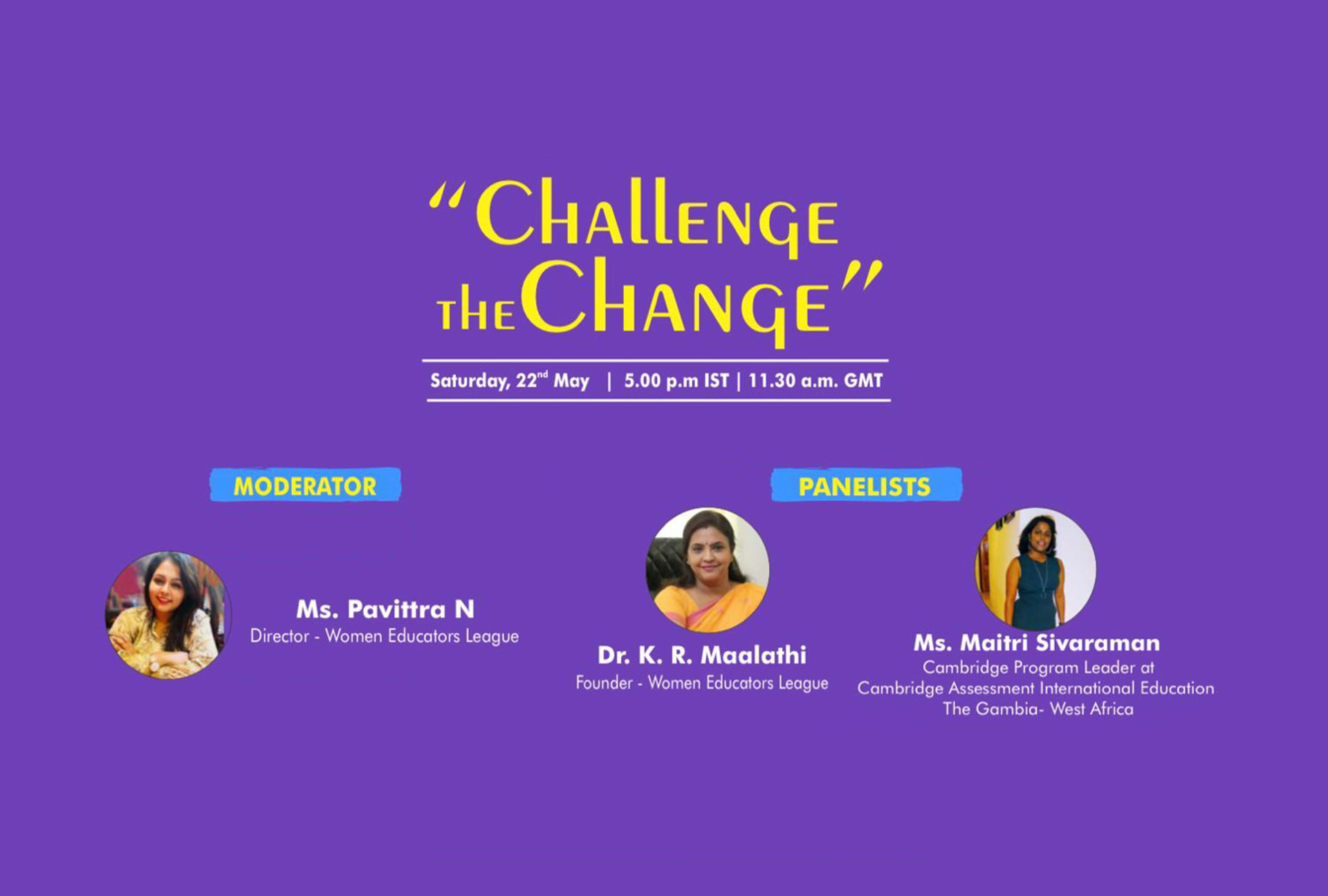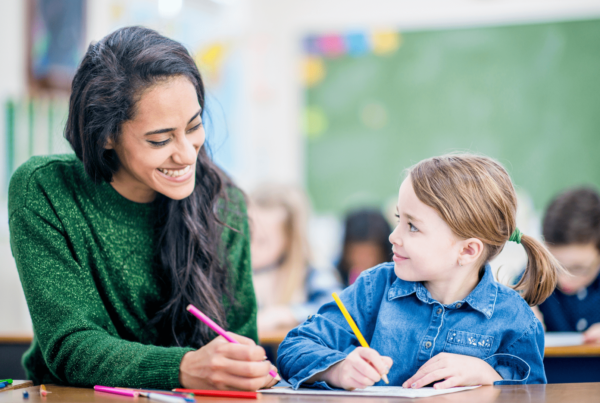Ms. PAVITTRA AROON in Conversation With
Ms. MAITRI SIVARAMAN
WEL : Is it true that the Gambian Education system is largely influenced by the British Education system and the official age for starting school is 7years? Please tell us about the school education system in Gambia? Help us understand the public-private partnership that exists with regards to making education accessible.
Maitri Sivaraman : Gambia is the smallest country in mainland africa, surrounding the river Gambia, which has been an English colony. Fun fact: though it has been surrounded by a Francophone country called Senegal, it has still managed to remain an Anglophone country.
The basic structure of the formal education system in The Gambia has the following three components:
1. ECD, Early Childhood Development (ECD): The Gambia Government’s revised Education Policy (2016 – 2030) emphasises the significance of ECD – the formative years critical for cognitive development.
2. Basic Education: (Lower Basic Education – grades 1-6, Upper Basic Education – grades 7-9) Basic Education Cycle (grades 1 – 9) The first 9 years of schooling make up the basic education route and is financed mainly by The Government.
3. Secondary Education: Senior Secondary Level: There are senior secondary schools (grades 10,11,12), of which some are subsidised via grant-in aid, some are funded by the government’s budget, and the remainder are private schools.
The other informal education happens in Daras and Majilis where children are taught Qur’anic education.
Madrassas are also Qur’anic education centres but they teach English, Math and science. Some of them are a combination of formal and informal education. Given the high priority given to religious education in some of the regions with the lowest enrollment rates, especially for girls, it would be an important asset that madrassas offer the official curriculum.
The Gambia’s National Education Policy (2016 – 2030) envisages a single, integrated, basic education system encompassing the years 1 to 9 with no transition exam at the end of the lower-basic cycle. In recognition of this provision the previous policy (2004 -2015) has created a swift growth in the upper basic level in terms of increased enrolments and expanded infrastructure
At the end of grade 12 students take the West African Senior School Certificate Examination (WASSCE) and depending on their results, they may go into the Technical Training Institute, Gambia College, university, or join the labour force.
The Ministry of Education is very welcoming to all its private partners who help and contribute in improving teaching and learning. Once an MoU is agreed upon between the government, the development partners are given opportunities to intervene and show results.
WEL : How is access to boys and girl’s education in government public schools? why is international schools so expensive in Gambia?
Maitri Sivaraman : Despite all the previous efforts and the structures in place, quality education still remains a major challenge. Though the Gross Enrolment Ratio (GER) is high, 82.0 per cent for boys and 84.0 per cent for girls (UNESCO 2011), children in The Gambia still face constraints to achieve the minimum standards required by the curriculum and the set learning achievement targets.
According to the MICS survey, 62.6 per cent of children of primary school age in The Gambia are attending primary school. At the national level, there is a slight difference between male (61.0%) and female (64.1%) primary school attendance rates. Almost all (95.3%) of the children who enter the first grade of primary school eventually reach Grade 6. Literacy levels among women aged 15-24 is 48.2 per cent. The highest level is found in Banjul and the lowest in Upper River Region (URR) and Central River Region North (CRRN), each registering less than 30 per cent. While gender disparities in education are very slight, the rural population is at a marked disadvantage, and poverty is the most discriminatory factor. Gender disparities are virtually inexistent for lower and upper basic enrollment, although a slight disparity exists as of upper basic completion, carried through to senior secondary, which is completed by only 25 percent of girls, against 32 percent of boys.
There are around 6 – 10 International schools in the capital Region 1 and Region 2, with a joint population of 699,704. Most of them predominantly follow the IGCSE curriculum and a few following Bilingual- French curriculum, US curriculum and Montessori. Gambia does not have a school with IB curriculum yet. The students are a mixture of expatriates and national students. Expatriate teachers from nearby African countries or Europe/Asia and Gambian teachers teach in these schools. The international schools have exceptionally good facilities for children to learn and explore their potentials. Hence the fees is expensive as in any set up.
WEL : With regards to teacher training, how is the demand for properly qualified teachers there? Is there scope for continued professional development for teachers in public school?
Maitri Sivaraman : The share of higher education students enrolled in teacher training doubled from 14 percent to 27 percent between 2005/06 and 2009/10, at the expense of engineering, manufacturing and construction courses. Humanities represent a staggering 40 percent of overall higher education enrollment, raising a potential graduate employability issue.
The increase in higher education was mainly driven by the recent expansion of teacher training programs.
Various large-scale trainings happen continuously in the Gambia to improve quality in teaching and learning. These trainings are conducted by government and non-government partners in education. There is a lot of scope for professional development in Gambia.
However, lack of teacher training especially for international schools was a huge challenge. With the increase in the number of international schools, it is mandatory that there needs to be a professional teacher training program.
So, I pioneered the first professional development program (PDQ) with SBEC International college, for teachers to get a professional certificate, with an online course from the University of Cambridge. As a Program leader for University of Cambridge International Assessment, we have completed 3 successful batches of certificate and 2 batches of diploma program since we started in January 2019 till date. These are short courses with a span of few months for each Module. The response has been great, and we have had quite a few distinctions.
WEL : why do you think there is disparity in pay between the public and private schools in Gambia?
Maitri Sivaraman : Since 2000, enrollment growth has been strongest in senior secondary and higher education, having more than doubled over 2000-09 from 15,554 to 36,141 students in senior secondary and having multiplied by almost four in higher education (from 1,948 to 7,155). Lower basic enrollment has increased steadily, from 223,328 to 303,281 over this period.
With increased enrollment, the ratio of teachers to student has also increased. The ratio of teachers graduating from the Gambia college is less compared to the actual requirement of teachers. So, under the economic conditions, the ministry is trying to manage with the teachers and working towards more postings of teachers.
WEL: Could you throw more light on the after school support program and the research paper published in the journal of development economics about rural education in gambia?
Maitri Sivaraman : I am the National Program Coordinator for a research project in Effective Intervention’s The After-School Support Program (ASSP). The objective was to further strengthen and support government’s efforts to address the quality issue especially for children in their early years of learning English and Mathematics.
In the first phase we trained around 101 Community educators (young boys and girls who had finished school and living in the villages) and 25 trained teachers who would be monitoring these educators. 2060 children were part of the intervention and 3 years of English and math classes were given by these community educators. We gave them lesson plans with activities to follow and teaching learning materials to use. At the end of the intervention, a scientific assessment tool called EGRA and EGMA was used to assess both the control and intervention group of students.
It was scientifically proven that there was an increase of 40% in the learning outcomes of children in the intervention group. The results of this have been statistically analysed by LSHTM (London school of hygiene and tropical Medicine) and published in the Journal of development economics titled;
How much can we remedy very low learning levels in rural parts of low-income countries?
After this great success, the program has moved to the expansion phase where 8400 children benefit and more than 600 community educators and 60 teachers are being trained. I am spearheading the program team in the expansion phase where 265 villages are benefitted in partnership with Ministry of Education.
WEL : How has the pandemic impacted school education there?
Maitri Sivaraman : In the Gambia, on average, a teacher interacts with 45 students daily. As the virus is highly contagious, a teacher or a student could potentially infect 45 households of a minimum of 7 household members (1:45×7:315). Therefore, the closure of schools is an education in emergency responding to this crisis.
Minister Cole announced that grades 7 to 12 will return to school on 14 October 2020, whilst ECD classes and primary schools are slated to return two weeks later. The minister also outlined plans to keep students and staff safe while in school, including the promotion of hand hygiene, social distancing and wearing of face masks.
Lockdown period in Gambia: March 18th to October 26th 2020
learning platforms provided for by the Ministry of Basic and Secondary education.
- a) Education and Radio TV Programs: parents ensured that children had access and are around the TV or Radio during the educational programs. Ministry took great effort to telecast sessions every day, as this was the medium that reached major parts of Gambia and the only way to reach children, especially in the rural areas.
- b) Distance Learning Materials: Regional Education Directorates and Head of Schools made sure some children had access to reading and learning resources. International schools had online classes where the children in the urban area benefitted from.
- c) Social Media: Parents were advised to ensure their children use the social media that is authorized by the Ministry and their Head Teachers.
I was impressed by the way the Ministry slowly opened the schools and was carefully monitoring the situation. All schools were cleaned with disinfectants before reopening. Children were made to sit in smaller groups and various measures were put in schools for washing hands and maintaining social distance. With regards to the impact in the online PDQ program for teachers, we did pause for a while but resumed when Cambridge got back to us on how to collect evidence of learning using online classes.
WEL : How are international curriculums like the Cambridge or IB impacting the educational landscape of Gambia. Are people receptive? Are there issues sourcing teachers to deliver the same?
Maitri Sivaraman : The primary completion rate is 75 percent, against the SSA average of 67 percent. Gambian students currently perform poorly in the National Assessment Tests (NAT). On recent national exams, a maximum of 10% of students in Grades 3 and 5 reached a mastery level in English, Science, or Mathematics (MoBSE, Education Sector Medium Term Plan: 2008-2011).
Hence, there is growing demand for the need to improve the learning achievements of children and overall quality of education. So international schools are kept in high regard due to the high quality of learning. Students who have passed from International schools are doing very well abroad in various universities across the globe.
Sourcing teachers is a continuous problem both in public and private sector due to the small population of the country and availability of qualified teachers. But professional development courses are now slowly making the situation better. More teacher training programs will come and help in improving the standards in future.
The Ministry of education is very receptive if developmental partners come up with any initiatives to accommodate or improve quality in teaching and learning as it is one of the key goals in the National education Policy.
I would like to conclude that One size does not fit all. It is my opinion that schools, educational institutions should give more choices and be more inclusive to allow children and parents to explore more opportunities. Learning from the Gambia education model, one should learn to find ways to constant improvements and better practices.
REFERENCES:
- Central Statistics Department and UNICEF., 2007. The Gambia Multiple Indicator Cluster Survey 2005/2006 Report: Monitoring the Situation of Children and Women. Gambia Bureau of Statistics.
- The Gambia education country status report (English). Africa education country status report Washington, D.C. : World Bank Group. http://documents.worldbank.org/curated/en/284581468032133072/The-Gambia-education-country-status-report
- SDG – Sustainable development Goals, The Gambia Country strategic Plan (2019 – 2021), The Gambia National development Plan (2018 – 2021)
Ms. Maitri Sivarman is the National Program Coordinator – Effective Intervention,The Gambia. Cambridge Programme Leader – PDQ – SBEC, The Gambia
Ms. Pavittra Aroon is a teacher educator and Director at Women Educators League.




